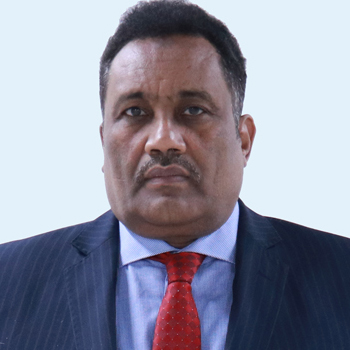Saudi Arabia economic outlook
The International Monetary Fund (IMF) updated on April 16, its economic outlook for Saudi Arabia, projecting a 6% growth in 2025, up from the previously projected 5.5%. This positive forecast is based on the expected expansion of non-oil sectors in the country, with non-oil economic investment activities driving economic growth.
The IMF report highlighted a promising outlook for the Saudi economy despite the challenges facing the Middle East and North Africa region, which is projected to have a growth rate of 2.7% due to geopolitical instability and regional conflicts. In January 2024, the IMF already revised by about 1.3% its expectations for Saudi economic growth from 4.2% (expected last October) to 5.5% in 2025.
It is noteworthy that the Kingdom of Saudi Arabia is ranked as the 17th largest economy in the world, ranking among the G20 countries. The country holds the largest economy in the Arab world, as well as in the Middle East and North Africa. As the leading oil exporter globally, Saudi Arabia is also a prominent member of OPEC. Moreover, the country possesses the second most valuable natural resources, valued at $35 trillion (according to the IMF report).
As experts assess their forecasts for Saudi economy in 2025, they need to consider Saudi strategy aiming to increase reliance on non-oil sector growth. While there have been concerns about the slower implementation of major investment projects under the Kingdom’s 2030 Vision, which could impact non-oil activities, the IMF report remains confident that the Saudi economy will surpass previous expectations.
The projected economic growth takes into account various global, regional, and local uncertainties that could significantly impact the economy of the region, such as geopolitical crises and ongoing conflict and threats in the Middle East (the current tensions between Israel and Iran), as well as unclear monetary policies in the United States.
In terms of the Saudi oil sector, the rise in oil production outside of OPEC, particularly in the United States, has exerted pressure on oil prices late 2023. This prompted OPEC producers, including Saudi Arabia, to cut production to maintain higher crude oil prices. However, ongoing geopolitical crises have unexpectedly driven oil prices up, benefiting the Saudi treasury. Consequently, Saudi oil revenue has significantly increased, offsetting production cuts. At present, crude oil is trading at over $83 a barrel.
Regarding monetary policy, the US Federal Reserve’s plans to lower interest rates (fall towards its target of 2%) in mid-2024 have been delayed due to persistent inflation. The latest economic reports suggest that interest rate cuts may instead start at the end of 2025. Consequently, lower interest rates in the United States would translate into a lower interest rate in Saudi Arabia, as the Saudi Riyal is pegged to the US dollar, thus supporting further economic growth.
Saudi fiscal policy also plays a role in economic growth. Although the 2024 Saudi budget reduced spending to support the economy, actual government spending has exceeded the budgeted amounts (increased by more than 20%), as confirmed by government releases. This increased government spending is expected to contribute to further economic growth through cash-flow activities.
In conclusion, Saudi Arabia has made significant progress in implementing reforms aimed at strengthening legal and regulatory frameworks, diversifying the economy, developing financial markets, attracting foreign investment, and empowering women in the labor market. The country has also achieved notable success in its 2030 Vision projects. The IMF analysis indicates that these reforms and investment projects have positively contributed to the growth of non-oil sectors in the Saudi economy. While the exact impact of ongoing geopolitical crises is difficult to predict, the IMF remains confident in the economic growth prospects of Saudi Arabia in 2025.
